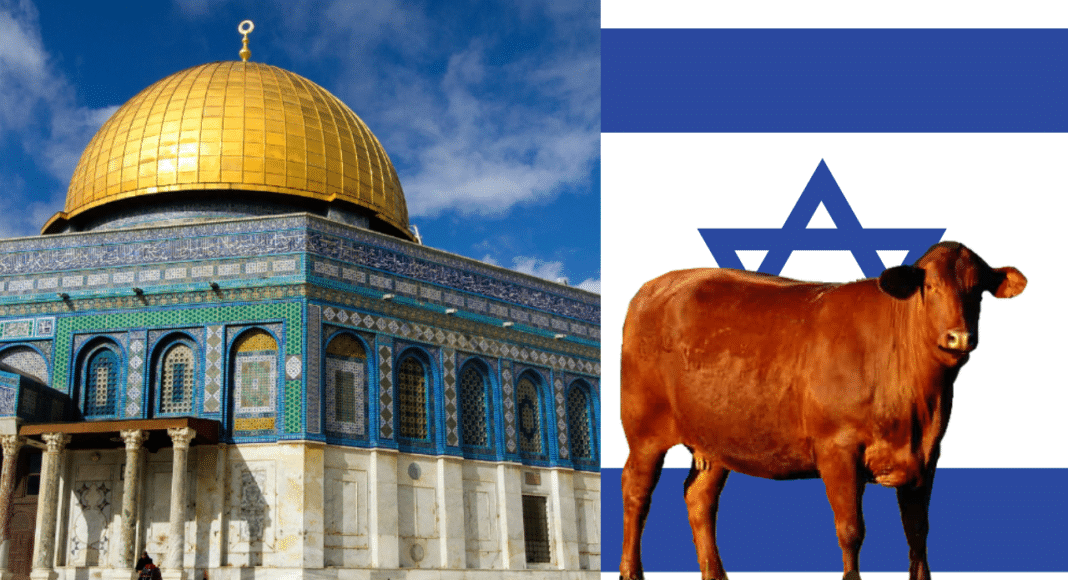The Jewish tradition, as outlined in the Talmud, emphasizes the conditions necessary for the arrival of the Messiah, including the rebuilding of the Temple at the site of the ancient Sulaimani Temple, known as the Third Temple. Central to this belief is the requirement for purification through the sacrifice of a red heifer, whose ashes are used for sanctification.
Similarly, the Holy Qur’an recounts the story of Prophet Musa (AS) and his people’s interaction with a cow, highlighting its significance in their culture. When instructed by Allah to slaughter a cow, they initially hesitated but eventually complied, underscoring the importance of obedience to divine commands.
READ ALSO — Red Cow Controversy: Tensions Rise Over Third Temple Plans
Both traditions attribute symbolic importance to cows in religious rituals, albeit in different contexts. While Jews seek a red heifer for temple construction and purification, Muslims reflect on the cow’s role in obedience to divine commands.
Despite these differences, parallels exist in the symbolic significance attributed to cows and their ritualistic importance in both traditions. These narratives provide insights into the religious beliefs and practices of Jewish and Islamic communities, emphasizing shared spiritual values such as obedience, purification, and ritual observance.


